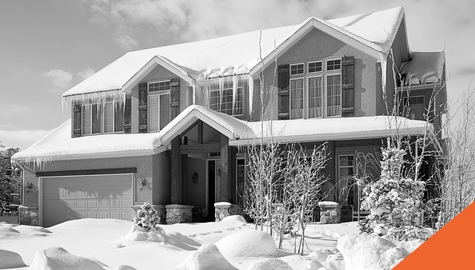Wildfires in Canada: How to Prepare and Plan for Safety
Friday, 24 May 2024
The threat of wildfires is a concern that leaves Canadians on high alert every year. From forests to neighbourhoods, the destruction that wildfires in Canada cause is an unfortunate reality that we as a country have had to deal with. As wildfires continue to make their presence felt, understanding how to prepare for these emergencies is crucial and can mitigate their impacts. In this guide, we’ll review important details regarding Canada’s wildfire season and explain how you can stay safe this summer.
The Annual Return of Wildfires in Canada
Wildfires are a natural part of the Canadian landscape, but they have become increasingly severe and frequent in recent years. Each summer, vast stretches of forest across the country are consumed by flames, often with devastating consequences for communities living in fire-prone areas.
Canada's wildfire season typically runs from April to October, with the peak occurring in the hot, dry summer months. Climate change has exacerbated the frequency and intensity of these fires, resulting in longer fire seasons and more extreme fire behaviour. In 2023, unprecedented wildfires in Alberta, British Columbia, and Ontario underscored the urgent need for effective wildfire management and community preparedness.
Wildfires can ignite from natural causes, such as lightning, or human activities, including unattended campfires, discarded cigarettes, and sparks from machinery. Once started, these fires can spread rapidly, driven by wind, dry conditions, and the availability of fuel in the form of forests and grasslands.
Preparing for Wildfires: Steps to Stay Safe
Preparation is crucial for those living in wildfire-prone areas to ensure safety and minimize property damage. Here are essential steps residents can take to prepare for wildfires effectively:
Create a Defensible Space
- Clear a Perimeter: Establish a buffer zone around your home by removing dead vegetation, trimming trees, and maintaining a green lawn. This reduces the fuel available for a wildfire.
- Fire-Resistant Landscaping: If possible, use fire-resistant materials in your landscaping. This includes creating firebreaks with gravel or stones to reduce fire risk further.
Harden Your Home
- Fire-Resistant Materials: Use fire-resistant building materials for your roof, walls, and deck. Metal, tile, and asphalt shingle roofs are preferable.
- Ember-Resistant Vents: Install ember-resistant vents and double-pane windows to prevent embers from entering your home.
- Seal Openings: Properly seal windows, doors, and other openings to prevent smoke and embers from infiltrating your house.
Develop an Emergency Plan
- Family Emergency Plan: Create a plan that includes evacuation routes, a communication strategy, and a designated meeting place. Consider the specific needs of all household members, including older adults, those with special health needs, children, pets, and service animals.
- Local Emergency Procedures: Familiarize yourself with local emergency management organizations, their plans, and evacuation procedures, as these can vary by region.
Prepare an Emergency Kit
- Essential Supplies: Assemble an emergency kit with water, non-perishable food, medications, important documents, clothing, and first aid supplies. Keep this kit in an easily accessible location.
- Additional Items: Include flashlights, batteries, a multi-tool, cash, and a list of emergency contacts.
Stay Informed
- Local Alerts: Sign up for local emergency alerts and monitor news reports to stay informed about wildfire activity in your area.
- Weather Conditions: Keep track of weather conditions and advisories, especially those related to fire risk and air quality.
Prepare Your Home for Smoke
- Air Quality Management: Consider purchasing certified, properly-sized portable air purifiers and high-quality air filters for your ventilation system.
- Test Smoke Detectors: This crucial step can provide early warning, giving you and your family valuable time to evacuate safely in an emergency.
Be Ready to Evacuate
- Evacuation Readiness: Be prepared to evacuate at a moment’s notice. Keep your vehicle fueled and have a list of essential items to take with you, including pets and valuables.
- Community Awareness: Check on elderly relatives and neighbours to see if they require assistance during an evacuation. If you need help, place a help sign in your window.
- Fireproof Your Property: Move propane BBQs, firewood, and lawn furniture away from structures to limit fuel sources. Close all doors and windows, and cover vents and other openings to prevent smoke from entering your house in the event of an evacuation.
- Utility Safety: Turn off propane or natural gas if you evacuate.
During a Wildfire
- Stay Calm and Informed: If you see a fire approaching your home or community, report its location immediately by dialing 9-1-1 or your local emergency number. Monitor local radio, television, or social media for information, warnings, alerts, or evacuation orders from authorities.
- Evacuation Preparation: Prepare your emergency kit and place any valuables or irreplaceable items in your vehicle. Park your vehicle facing out of the driveway for a quick departure.
Driving During a Wildfire
- Safe Driving Practices: Stay at least 10 meters from downed power lines to avoid electrocution. Do not drive through areas with active fires or downed power lines unless directed by emergency officials.
- Evacuation Routes: Always follow official evacuation routes and stay tuned to your local radio station for up-to-date information on the fire and possible road closures.
Does Home Insurance Cover Wildfires?
While preparing for wildfires can significantly reduce risks, having a financial safety net is important in case the worst happens. Home insurance plays a critical role in protecting homeowners from the devastating financial impact of wildfires and can help pick up the pieces following this traumatic event. Here are some ways that home insurance for fire damage can assist during this time of need:
Coverage for Damage: Standard home insurance policies typically cover fire damage, including damage caused by wildfires. This includes the cost of repairing or rebuilding your home and other structures on your property, such as garages and sheds.
Personal Belongings: Property insurance also covers personal belongings damaged or destroyed in a wildfire. This can include furniture, electronics, clothing, and other personal items.
Additional Living Expenses: If your home is uninhabitable due to a forest fire, insurance can cover additional living expenses, such as temporary accommodation, food, and transportation, while your home is being repaired or rebuilt.
Given the increasing threat of wildfires, reviewing your insurance policy to ensure it provides adequate coverage is essential. This applies not only to your property insurance but to your car insurance policy as well. If you live in a high-risk area, consider adding additional coverage and discussing your options with an insurance broker.
What Steps Do I Take Following a Wildfire?
In the aftermath of a wildfire, your priority is to ensure your and your loved ones' safety. Only return home once you have received word from local authorities that it is safe to do so. Upon arrival, file a claim with your insurance provider as soon as possible to initiate the process of returning to normalcy. Document the damage thoroughly with photographs and detailed notes, and avoid making any permanent repairs until an insurance adjuster has assessed the situation.
Secure your property to prevent further damage or theft, and keep all receipts for temporary repairs or accommodations, as these may be reimbursable. Stay in close contact with your insurance provider to stay informed about the claim's progress and next steps. Finally, seek support from local resources and community organizations to assist during this challenging time.
Insurance Made Easy with BIG
As wildfires in Canada become a recurring and intensifying issue, proactive preparation is crucial for those living in fire-prone areas. By taking steps to prepare your property and ensuring you adequately safeguard your home with fire insurance, you can significantly reduce the impact felt following a wildfire.
For more information, read our blog post “What to do After a House Fire: Navigating the Insurance Landscape” or contact a BIG broker today.



